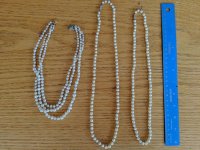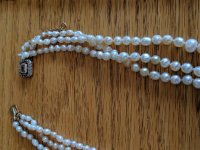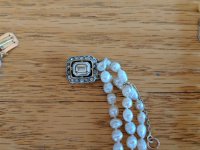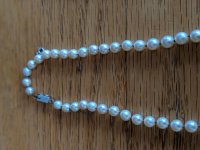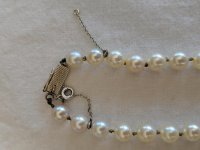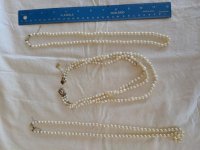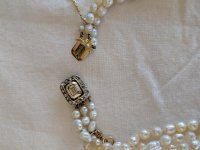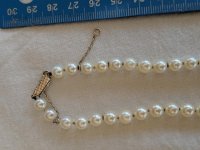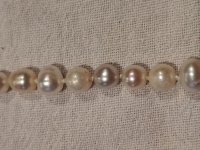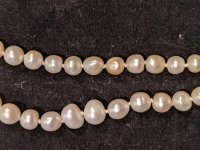I merged your two threads because of all the photos.
They all do look like real pearls. I definitely would clean them and restring them. Before restringing, give them a bath in soapy water, preferably bottled water to avoid chlorine and hard water minerals. Use mild soap, not detergents or jewelry cleaners, which are too harsh for pearls.
You can either take them to be restrung by a jeweler or you can restring them yourself. Many of us restring our own pearls. Aside from saving money, it enables us to restyle our necklaces if we wish. It looks like two of those necklaces (which appear to be akoyas) are round and of a similar size, color and quality-- is that right? If so, you could resting them together as one long necklace, with a clasp so they could be doubled if you wish. It's just an idea.
We have several tutorials and videos on how to restring, on the Lowly Beaders Club right here on Pearl Guide.
As for routine care, just wipe them with a soft cloth, dry or damp, after wearing, and don't store them with anything that could scratch them, like gemstones. A soft cloth pouch is perfect.
Generally speaking it is not necessary to insure pearls, if they don't have a particularly high value. I am curious about the baroque shaped strand. I'd normally say they are cultured freshwaters (not particularly valuable) but they are not the typical strand of freshwaters. The shapes and colors are not alike, and it's finished with gimp near the clasp, which is often not true of inexpensive strands of fwp. I'm just wondering if that baroque strand could be a natural pearl strand (in which case it might be worth insuring.) Were your grandparents well-to-do? If so, it might be worth getting the metal and the stones tested in that strand, and if they turn out to be gold/gems, consider getting the pearls tested by the GIA lab. If they are natural they will be certified as such. But if the clasp and stones are imitations, then I would not bother testing further.
